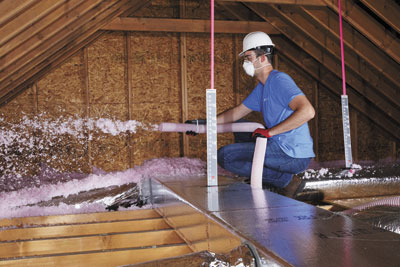
Florida News
April is Duct Season in Florida
While every home’s HVAC system presents unique considerations, ducts in Florida homes present some special challenges for contractors and homeowners.
 Ductwork in most Florida homes built in the last 25 years is located in the attic. Not only is this part of the home typically tight quarters for technicians to work in, but its sweltering temperature presents safety concerns. For this reason, contractors find that April is a good time to leverage the final moments of “shoulder season” heading into peak cooling months. Late spring is a good time to talk with homeowners about their ductwork and how this “invisible network” can contribute to energy efficiency, occupant comfort and indoor air quality.
Ductwork in most Florida homes built in the last 25 years is located in the attic. Not only is this part of the home typically tight quarters for technicians to work in, but its sweltering temperature presents safety concerns. For this reason, contractors find that April is a good time to leverage the final moments of “shoulder season” heading into peak cooling months. Late spring is a good time to talk with homeowners about their ductwork and how this “invisible network” can contribute to energy efficiency, occupant comfort and indoor air quality.
Duct Retrofit: What’s In It for Florida Homeowners?
Properly sized, installed and maintained ductwork is especially relevant to Florida’s homes given the building surge that began in the 1980s. Many homes built prior to the early 2000s were insulated to meet much lower code requirements. The R-4 insulation that sufficed in 2000 met existing codes of the day. But those standards do not hold up to today’s more rigorous codes. And as every contractor knows, codes serve only as a minimum baseline when it comes to energy efficiency.
There are also technology advancements to consider. Today’s high-efficiency HVAC equipment is very different compared to equipment made 20 years ago. As such, a home’s ductwork may not realize the full benefit of innovations.
Signs that a home’s ductwork needs attention are varied. Virtually every contractor hears homeowner complaints about that room that is always too hot, or the sneezing that seems to occur only in the house. Other customer complaints that may signify a ductwork problem include:
- Musty smell
- Excessive dust
- Mold/mildew around vents (ask homeowners to look up at their registers)
- Condensation on (or near) AC unit cooling coils
- Frequent cycling
- Hot or cold spots
- Visible ductwork damage
- High heating/cooling bills
Few homeowners are aware of the role their home’s duct system plays in facilitating comfort and air flow. Talking with customers about their home’s ductwork, conducting a duct inspection, determining if the duct is sized properly, and explaining the benefits of a duct retrofit can help homeowners optimize the efficiency of their system, improve comfort and support indoor air quality while maximizing their comfort system investment.
Duct Retrofit: What’s In It for Florida Contractors?
Duct inspections provide an opportunity for contractors to keep their technicians busy, generate additional revenue per job, and help protect a homeowner’s investment. While many homeowners take great pride in having the most energy efficient cooling equipment, they will not enjoy the benefits of their investment if their ducts are leaking. In fact, the typical house loses up to 30% of the air in ducts due to leaks and holes in ductwork.
Owens Corning along with a cohort of five contractors in Florida recently piloted a duct retrofit initiative. Based on robust market support, the company is deepening its investment in this offering. To learn more about Owens Corning’s air distribution services and how duct retrofit can support your business and the homeowners you serve, please contact Duct Retrofit Program Business Development Leader Dave Pawlicki at dave.pawlicki@owenscorning.com.














